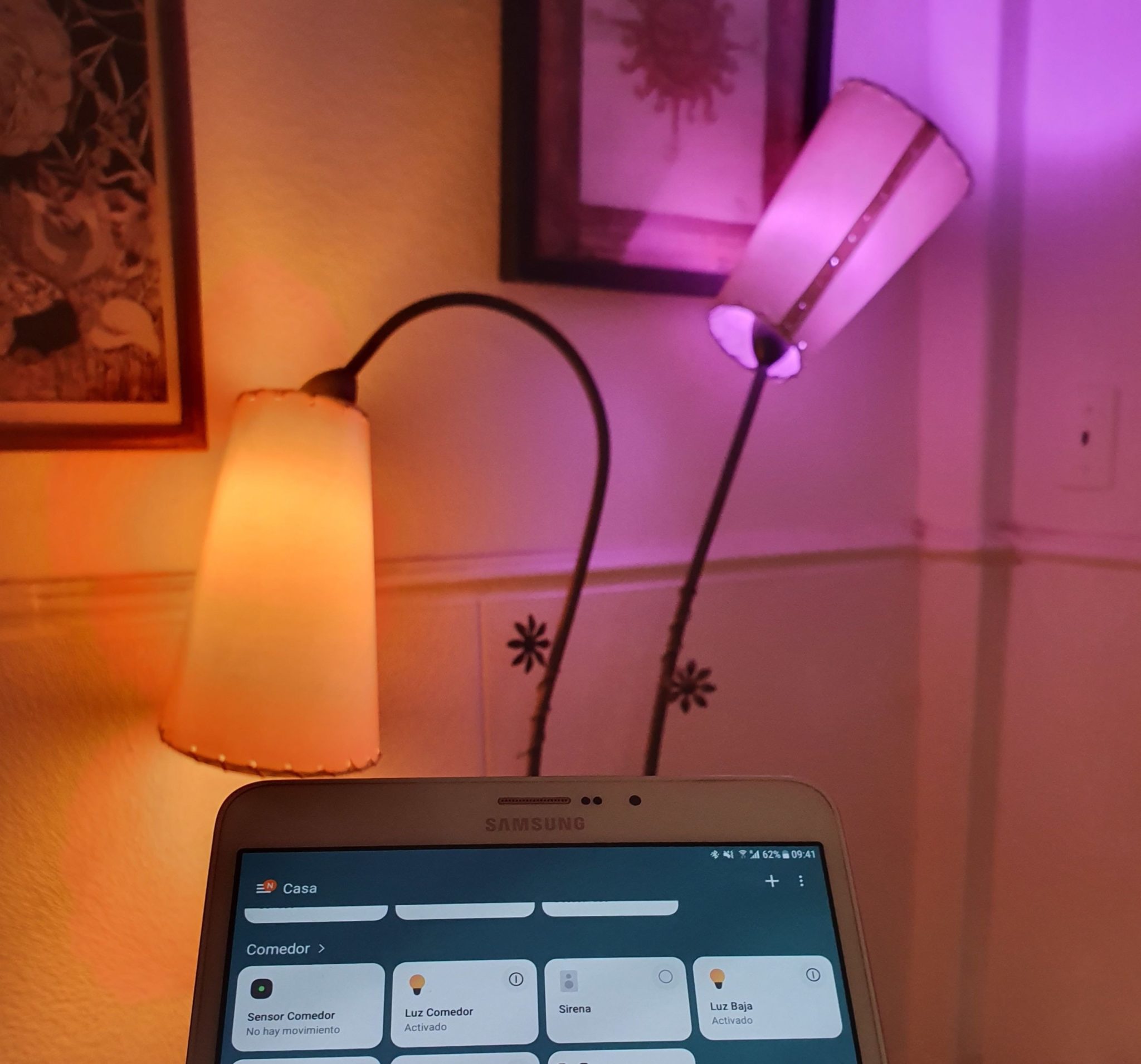If you are interested in knowing how your life would be if you automate your house, keep reading the interview we did with our team member, Sebastian Perez, Business Analyst. He tells us all about domotics and the impact it has had on his life.
Could you explain what domotics means?
In your daily routine, it means you can forget about using the light switch when you enter a room, that the room always stays the right temperature when you are asleep during the winter and you will know if there was any movement or a door was opened while you were out.
The domotics can be orientated according to necessity: it could be a matter of safety or just for comfort.
How did you get involved in the world of domotics?
I have always been into technology, so the moment I saw the opportunity to add some of it to my daily routine it seemed really interesting. As every hobby does, it begins with one product that then you want to combine with others and explore its potential.
Is it hard to automate a house? What requirements must a building fulfill so you can implement domotics?
Nowadays there are no physical limitations to implement domotics, there is no need to build a house from scratch to do it nor incorporate infrastructure, everything is wireless. The hardest thing is finding the devices because almost everything is imported. In addition, there is an issue with the different standards between countries. For example, with the US we share the same Z-Wave norm, but with different voltages, and with Europe we have the same voltage but different frequencies. However, each day is easier and everything becomes more compatible, like ZigBee or even the wifi network of the house.
Which device did you first acquire? How was it getting used to it and incorporated into your routine?
I purchased the Philips Hue light bulbs at the beginning of 2013. It consists of lightbulbs that look like the regular ones but with z-wave receptors incorporated that allow you to remotely manipulate the brightness, temperature, and color, as well as the possibility to automate different actions.
I started using them as a wake-up alarm, the bedroom lights began to light slowly until I woke up. Also, I had them in my backyard, there they turned on at sunset and would turn off at sunrise.
How many rooms in your house have domotics?
Except for the bathroom, where we forget that we have to turn the lights on and off manually, all the rooms in my house have domotics.
We have domotics for all the light bulbs, sensors in almost every door, the siren of the alarm, sensors of temperature, etc. Furthermore, I have a lock for the door that I will install when we finish building our new house.
How did your family react to this way of living in their home?
At the beginning, my wife wasn’t that convinced with the experiment, especially when a device wouldn’t work as it should. I guess these aren’t problems that cause a divorce. But eventually she got used to it and now she enjoys the advantages.
My son, of 15 months, is the one that enjoys the domotics the most. When he enters a room he waves his hands in the air to turn on the light. In fact, his crib’s lamp would turn warm and soft during the night and he knows it’s time to sleep. Or it would change the colors with the sound of music.
How do you find out about new devices and ways of domotics?
Mostly from reviews from people that focus on domotics on YouTube. Also, the big players got in the market so it’s easier to hear about the subject, not to mention there is more software to manipulate the domotics and automatize a house:
Apple has the home kit, Samsung has the “smart things”, Google has the “Google Home”, Xiaomi has the “Xiaomi Home” and “Aqara”. There are alternatives for all preferences and pockets. From light switches Sonoff of 8 dollars, but it requires some configuration, till pre-assemble systems like the ones from Samsung. IFTTT works with almost everything and you can combine your devices with any internet service, for example with social media, the weather forecast, Spotify, etc. And, if you want to, you can get more complex solutions that require a bit of code.
Where do you get your new devices? Are they easy to purchase in Argentina?
Almost every device I have I got abroad (US, China, Spain). When it comes to prices, China is unbeatable and the products aren’t bad. It’s hard to buy in Argentina because of the exchange rate or the difficulty to import, but it’s getting easier. For example, Philips already has an official store here in Mercado Libre for its light bulbs, at similar prices to Europe.
What advice would you give to someone that wants to start using domotics in the house?
My first piece of advice would be for them to recognize the necessity, the time they would dedicate and, of course, their budget. Every system requires a central hub, that’s the key for the future compatibility. The Xiaomi’s ecosystem is cheap, complete, it works really well but it’s not compatible with other brands. Smartthings is expensive, but you can add hw from third parties or link it to google products. You can use your cellphone, tablet or even a smartwatch to control the devices.
There are DIY solutions for people that like to assemble everything from scratch, that of course are cheaper, but it has its learning curve (lots of tests and mistakes).






